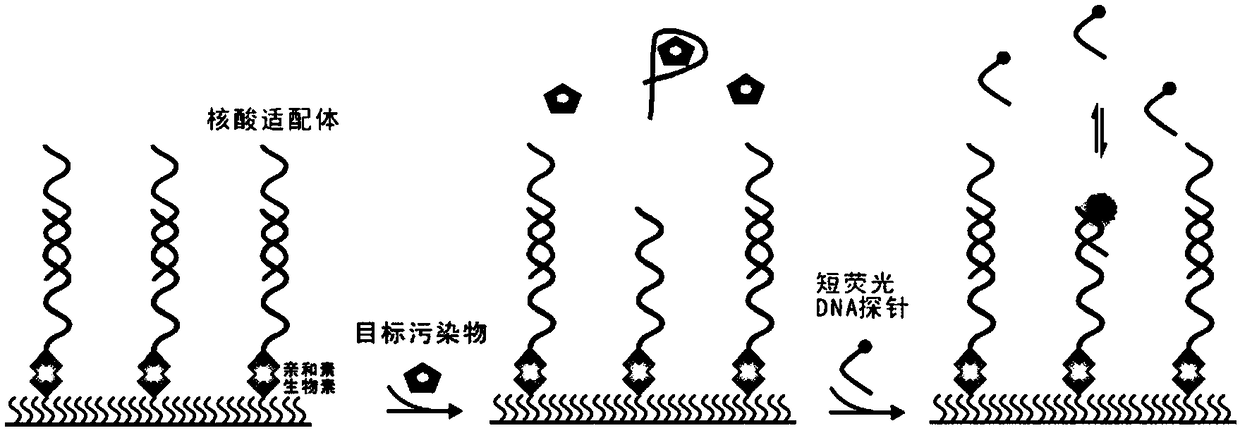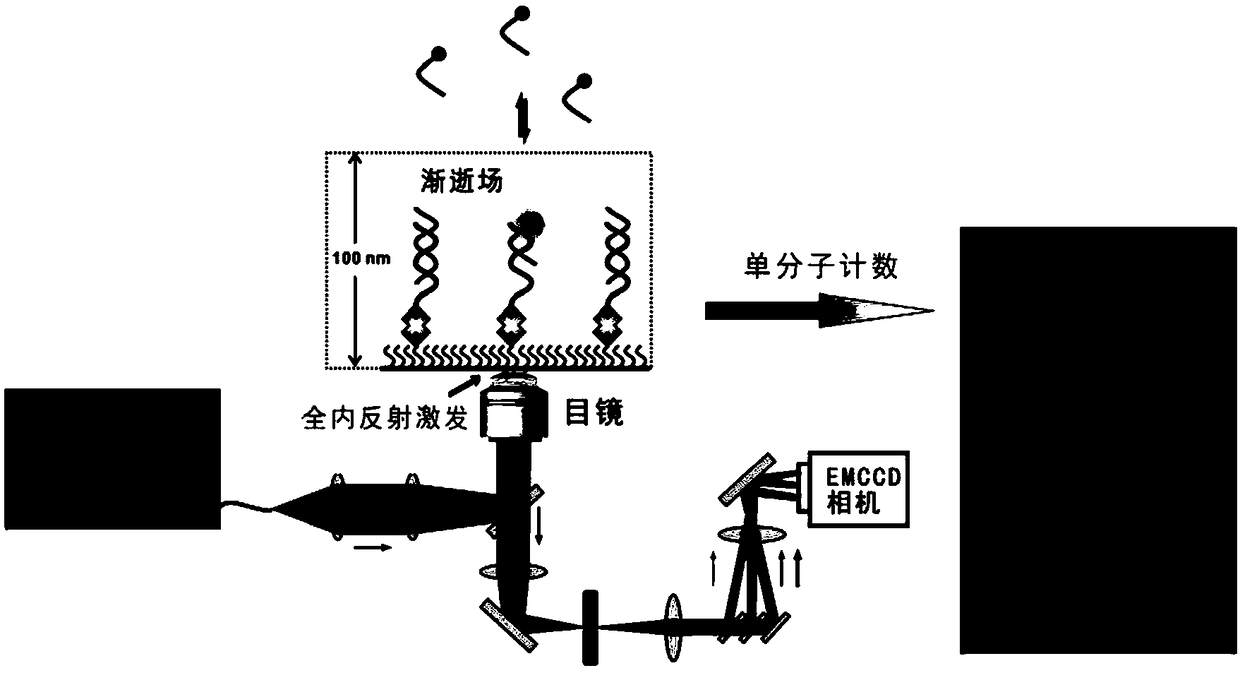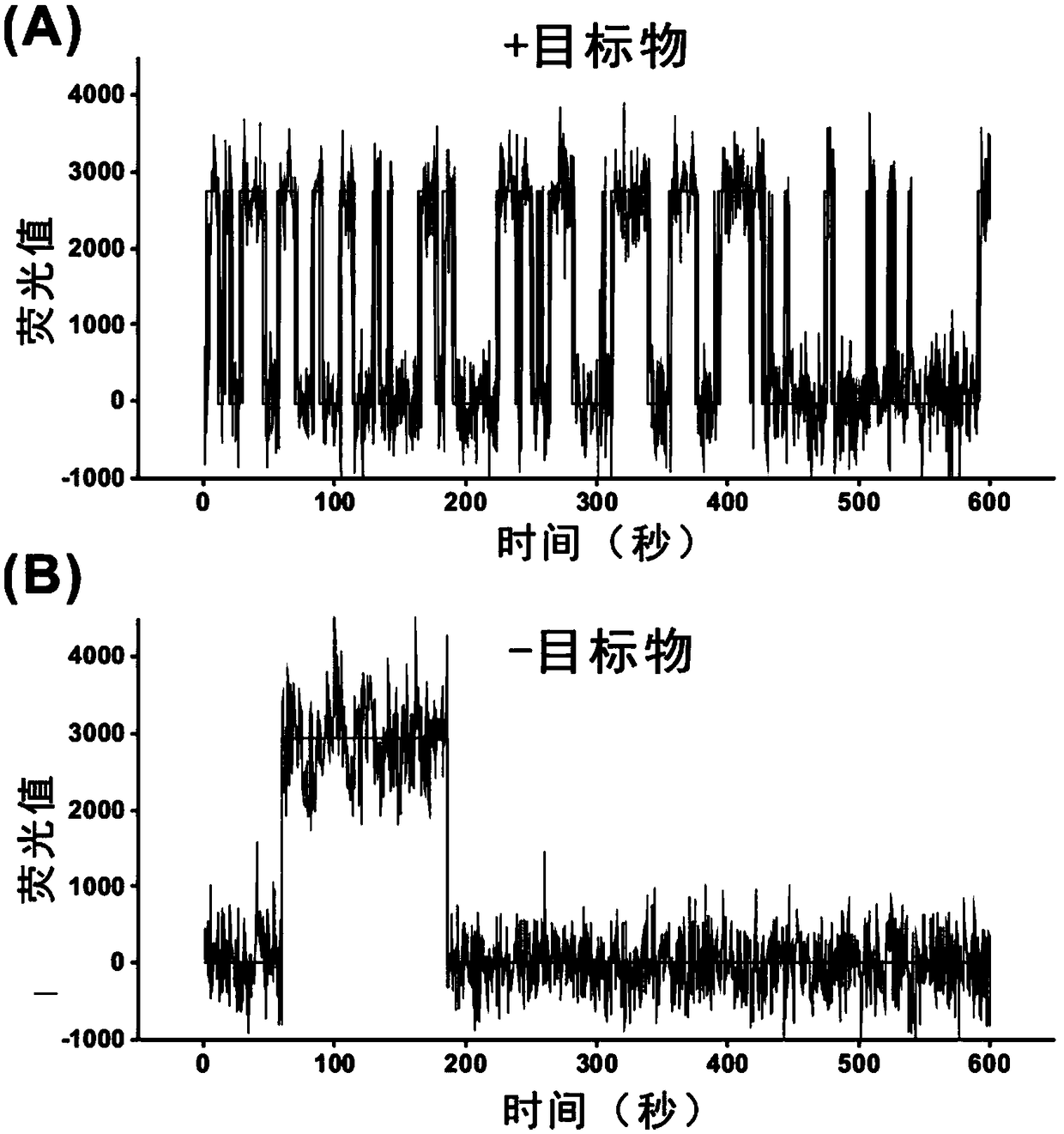A method for detecting trace target substances based on single-molecule fluorescence sensing
A fluorescent sensing and target technology, applied in biochemical equipment and methods, microbial measurement/inspection, etc., can solve the problems of reduced sensitivity and specificity, impact on repeatability and reliability, and reduction of solution fluorescence background, etc., to achieve High selectivity and sensitivity, improved sensitivity and specificity, easy preparation effect
- Summary
- Abstract
- Description
- Claims
- Application Information
AI Technical Summary
Problems solved by technology
Method used
Image
Examples
Embodiment 1
[0052] Example 1: Detection of acetamiprid and PCB-77 using single-molecule fluorescent sensing
[0053] (1) Microscope surface modification
[0054] Disposable slides were sonicated in 1M KOH solution for 20 minutes and rinsed with water. Boil in 14% hydrogen peroxide / ammonia for more than 20 minutes, rinse with water, then sonicate in methanol for 15 minutes, and rinse with acetone. Put a certain amount of deionized water in the bottom of the empty gun tip box to keep the humid environment. Place the above blow-dried slides on the rack of the tip box.
[0055] Prepare 0.1M sodium bicarbonate solution as PEG buffer. Use this buffer solution to prepare a solution containing 250mg / ml mPEG and 25mg / ml biotin-PEG, drop it on the glass slide immediately, 120μL for each piece, and cover it with another piece of glass slide without air bubbles. React at room temperature for 3 hours, wash with water and blow dry with nitrogen, and place the modified surface up on the shelf of the...
PUM
 Login to View More
Login to View More Abstract
Description
Claims
Application Information
 Login to View More
Login to View More - R&D
- Intellectual Property
- Life Sciences
- Materials
- Tech Scout
- Unparalleled Data Quality
- Higher Quality Content
- 60% Fewer Hallucinations
Browse by: Latest US Patents, China's latest patents, Technical Efficacy Thesaurus, Application Domain, Technology Topic, Popular Technical Reports.
© 2025 PatSnap. All rights reserved.Legal|Privacy policy|Modern Slavery Act Transparency Statement|Sitemap|About US| Contact US: help@patsnap.com



